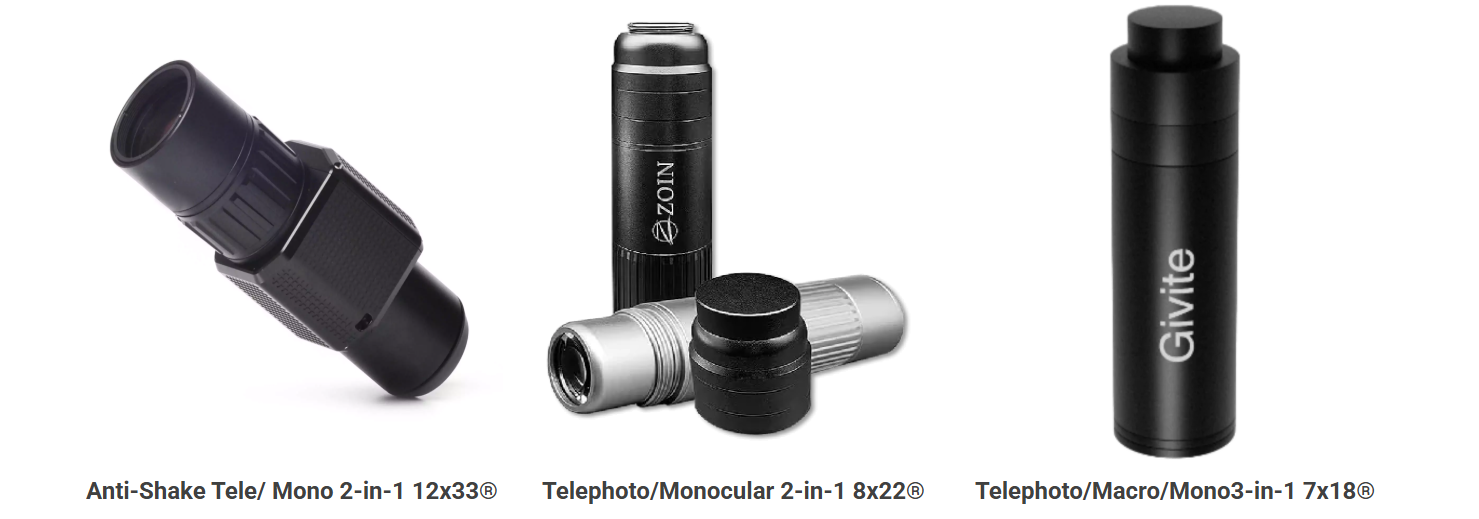
Request


Picking the right monocular ensures you see things clearly and comfortably for your needs. This guide explores key things to think about, it covers how your plans for using it and the view’s width affect size choice. You’ll also learn about small versus big models and why HEMUSUN is a trusted supplier, helping you find the best monocular for any activity.
The zoom power, lens size, and how portable it is are big factors in how well it works, how clear it looks, and how easy it is to use for different activities.
Zoom power decides how close faraway things look. A lower zoom, like 5x or 6x, shows a wider area and is easier to hold steady. This is great for casual use. A higher zoom, like 9x or 10x, gives more detail but shows less area and makes hand shakes more noticeable. You might need a stand to keep it steady. For general use, 8x is a good middle ground. It gives clear details without being too hard to use. Pick a zoom based on how far you need to see and how steady you can hold the monocular.
The lens size, measured in millimeters, affects how much light the monocular pulls in. This impacts how bright and clear the image is, especially in dim light. A bigger lens, like 42mm, catches more light, making images brighter. But bigger lenses make the monocular heavier and bulkier. Smaller lenses, like 18mm or 22mm, are easier to carry but may not work well in low light. For example, HEMUSUN’s 8x22 zoom monocular is portable yet gathers enough light for daytime use.
How heavy and big a monocular is matters a lot for activities where you move around. Light monoculars, under 300 grams, are simple to carry for hiking or trips. Heavier ones, over 500 grams, might have better lenses but are less practical for long walks. For example, a small monocular slips into a pocket for a hike. A heavier one is better for sitting still, like at a campsite.
What you plan to do with the monocular shapes the best size for it. Different activities, from outdoor trips to watching events, need specific features that change the size and how it works.
Hiking, camping, or hunting calls for small, sturdy monoculars that are easy to bring along. A light model with 6x to 8x zoom and a 20–33mm lens, like HEMUSUN’s 12x33 steady monocular, works well for daytime trails. Features that protect against water and fog are important for changing weather. These monoculars should fit in a backpack or pocket.
Watching birds or animals needs clear lenses and a wide view to follow moving things. A monocular with 8x to 10x zoom and a 32–42mm lens gives sharp details and good light for early morning or late afternoon. Weight isn’t as big a deal here. Birdwatchers often use stands for long viewing sessions. A larger lens makes distant creatures clearer, but being able to carry it is still key for trips outdoors.
For things like sports games or concerts, small monoculars are best. They’re easy to handle in crowded places. A 5x to 8x zoom with an 18–25mm lens, like HEMUSUN’s 7x18 close-up monocular, gives clear views without being too heavy. These should be tiny enough to fit in a bag or pocket. This way, you can enjoy the event without dealing with bulky gear.
Activity | Suggested Zoom | Lens Size | Weight |
|---|---|---|---|
Outdoor Adventures | 6x–8x | 20–33mm | <300g |
Birdwatching | 8x–10x | 32–42mm | 300–500g |
Sporting Events/Concerts | 5x–8x | 18–25mm | <200g |
Field of view is how wide an area you can see through the monocular. It’s often measured in feet at 1,000 yards. A wider view helps you find and follow things, making it a big factor in picking the right size.
A stronger zoom shrinks the view area, making it trickier to track moving objects. For example, an 8x monocular might show 350–400 feet at 1,000 yards. A 10x one could drop to 300 feet. A lower zoom, like 5x or 6x, gives a bigger view area. This is great for scanning landscapes or following fast animals. When picking a monocular, decide if you want detailed close-ups with a smaller view or a wider look with less detail.
A bigger view area is key for activities with moving things or big scenes. Tracking birds or animals in flight needs a wide view to keep them in sight. Watching players run across a sports field is easier with a broader view. Looking at mountains or city views is better with a larger view to see the whole scene. For these activities, choose a monocular with 6x to 8x zoom to keep a wide view while still seeing clear details.
Small and large monoculars each have their own perks, depending on what you value most—being easy to carry or getting the best image.
Handy pocket scopes, usually under 300 grams with 18-25mm lenses, are made to be easy to carry around. They're so small you can tuck them into your jeans pocket or toss them in any bag, perfect for trips or when you need quick peeks at things. Since they weigh next to nothing, your arms won't get tired even after hours of birdwatching or checking out stadium action. Their low-key look means they don’t draw attention when you're using them in busy places like music festivals or ballgames. Take those 7x magnification ones - they're just right for everyday use or last-minute outdoor fun.
Larger monoculars, with lenses of 32–50mm and weights of 300–600 grams, focus on clear images. They’re great in low light, like at dawn, dusk, or in shady spots, because bigger lenses catch more light. They give sharper, clearer views for things like birdwatching or looking at stars. Their weight isn’t a big issue if you use a stand or stay in one spot. These are better for people who care more about image quality than carrying something light.
Finding the best monocular means looking at how different sizes perform and matching them to what you need and like.
How well a monocular works depends on its size, affecting clarity, brightness, and ease of use. Small ones, with 5x–8x zoom and 18–25mm lenses, are easy to carry but might not shine in low light. Medium ones, with 8x zoom and 25–33mm lenses, mix clear images with manageable weight, good for many activities. Big ones, with 8x–10x zoom and 32–50mm lenses, give the best images but are heavier. Try different models to check their image quality, weight, and how they feel in your hand. For example, HEMUSUN’s 12x33 monocular offers strong zoom with a weight that’s still easy to handle for various uses.
Your habits and viewing goals help pick the right monocular. If you use it every day, a small model is more convenient. If you only use it sometimes, a bigger one with better lenses might be worth it. For activities where you move a lot, light models are better. For sitting still, heavier ones work fine.
HEMUSUN, a top maker of viewing tools, creates high-quality monoculars for all kinds of viewing needs, making them a trusted choice for hobbyists and experts.
HEMUSUN uses advanced tools to make monoculars with clear images and tough builds. Their products, like the 3-in-1 7x18 monocular, have top-notch lenses and steadying features. These ensure sharp pictures even in tough conditions.
HEMUSUN puts customers first, offering quick help and options to fit different activities. Their creative designs, like monoculars that work with smartphones, make it easy to capture and share views. Customers praise HEMUSUN’s fast shipping and reliable products. These reviews show their focus on keeping buyers happy and pushing new ideas in viewing tools.

Think about zoom power, lens size, how easy it is to carry, and the view’s width to find the right fit for your activities, like hiking, birdwatching, or watching events. Small models are handy, while big ones give clearer images. HEMUSUN’s top-quality, creative monoculars offer flexible solutions to make every view sharp and exciting.
What magnification works best for everyday viewing?
8x power gives you the best all-around view. It keeps things clear and steady when you're holding it. You'll see details well whether you're walking trails, at a show, or just checking things out nearby. The view stays sharp but doesn't shake too much.
How do lens treatments improve what you see?
The special layers on the glass help a lot. They stop bright light from washing out your view and let more light in. This means you get clearer, brighter images day or night. The more layers it has, the better it works in all kinds of light.
Do you really need waterproofing for outdoor adventures?
Yes! If you're outside much, get one that keeps water out. Rain, fog, or damp air won't bother it. This means it keeps working right when weather turns bad and lasts longer too.